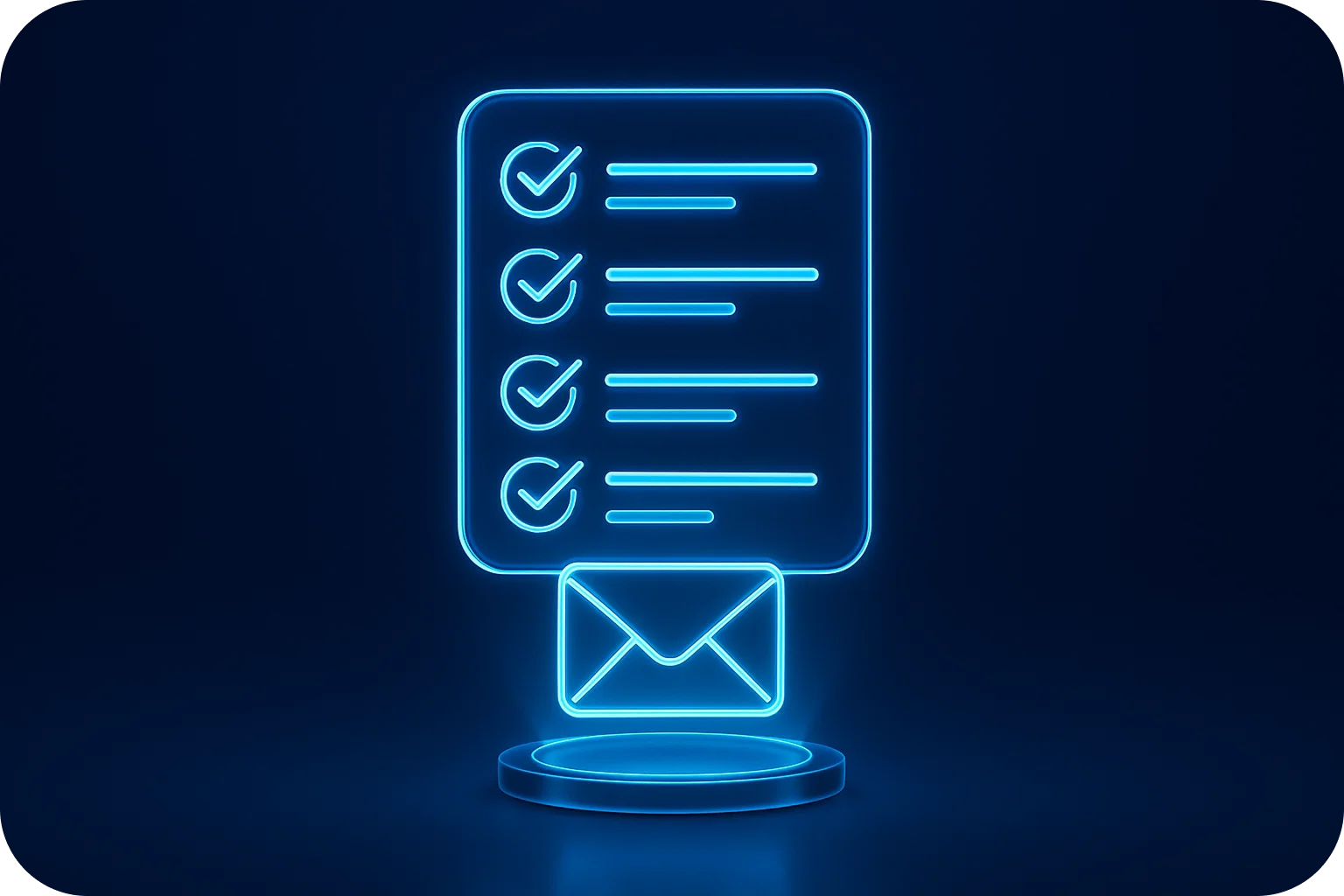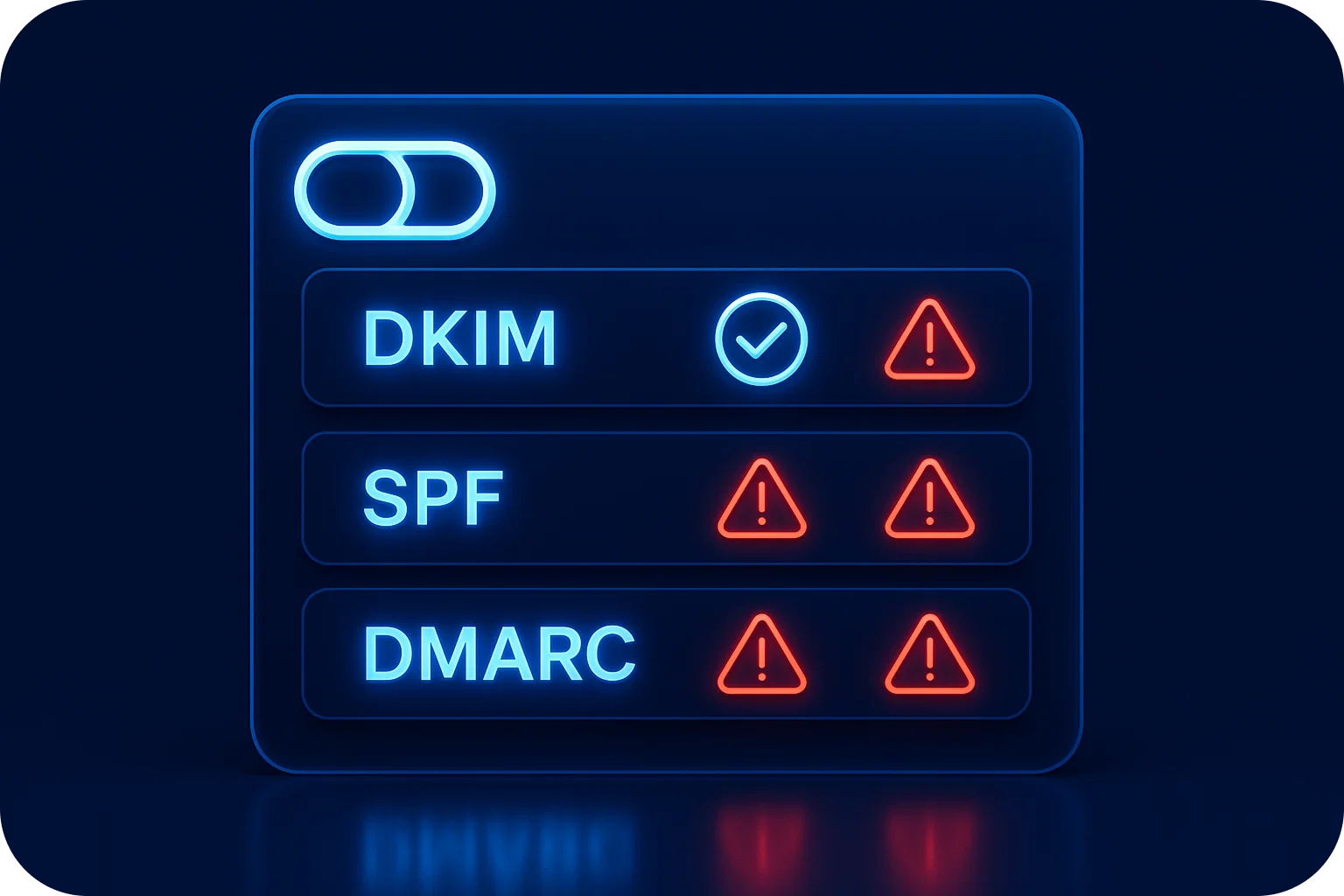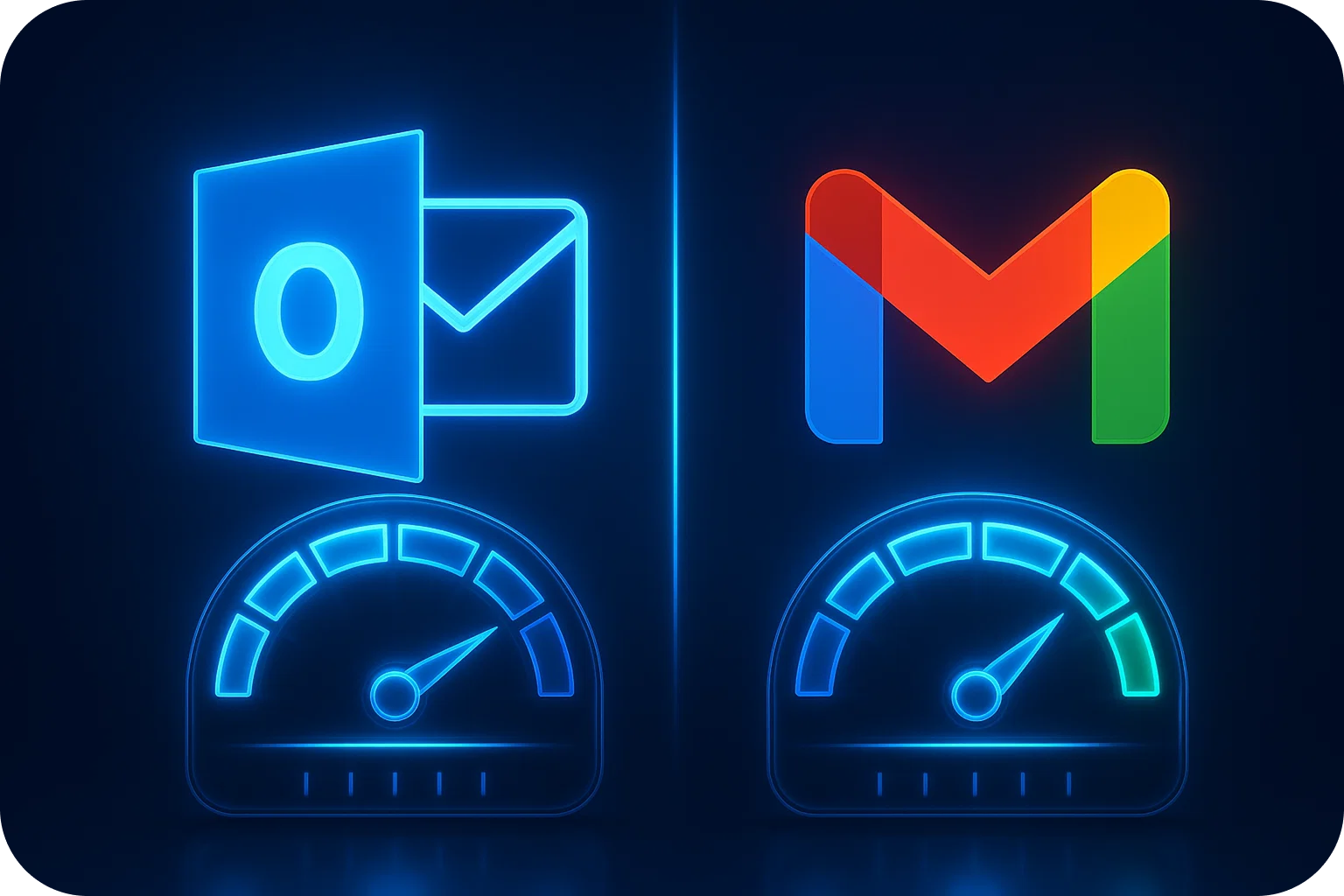Why Your Competitors Are Getting 10x More Replies (It's Not Their Copy)
.png)
You've spent hours crafting the perfect cold email. You've A/B tested subject lines, personalized every message, and followed all the "best practices" you found online. Yet your response rates are still stuck at 2-3%, while your competitors seem to effortlessly pull 20-30% response rates from similar prospects.
Here's the uncomfortable truth: your copy isn't the problem.
While you've been obsessing over the perfect opening line, your savvy competitors have been building something far more valuable, a rock-solid email infrastructure that ensures their messages actually reach the inbox. They understand that the best copy in the world is worthless if it lands in spam folders or gets blocked entirely.
The Hidden Foundation of High-Performing Cold Email
When most sales teams think about email outreach performance, they focus on the visible elements: subject lines, personalization, and call-to-action. But the real game is played at the infrastructure level, where decisions about domains, IP reputation, and technical setup determine whether your emails even have a chance to be seen.
Think of it like building a house. You can have the most beautiful interior design, but if your foundation is cracked, the whole structure will eventually collapse. Email infrastructure is your foundation; most companies are building on quicksand.
The Deliverability Crisis Nobody Talks About
Here's a statistic that should terrify every sales leader: the average cold email has only a 65-70% chance of reaching the inbox. That means 30-35% of your carefully crafted messages are being filtered out before prospects even know they exist.
Your competitors getting 10x more replies aren't necessarily 10x better at writing emails. They're just ensuring 10x more of their emails actually get delivered. When you're hitting 98% deliverability rates instead of 65%, the math becomes obvious.
The Four Pillars Your Competitors Have Mastered
1. Domain Strategy and Reputation Management
While you're sending from your main company domain, smart competitors are using dedicated sending domains that protect their primary brand reputation. They understand that cold outreach and transactional emails should never share the same infrastructure.
The most sophisticated operations run multiple domains with proper warm-up sequences, gradually building sender reputation over 3-4 weeks before scaling to full volume. They're not just buying domains; they're strategically managing an entire ecosystem of sending infrastructure.
Key insight: Your competitors are thinking like email service providers, not like individual senders. They've built systems that can scale to 100x volume without sacrificing deliverability.
2. IP Reputation and Provider Diversity
Here's where most companies make a critical error: they put all their eggs in one basket. Whether it's Gmail, Outlook, or a single email service provider, they're creating a single point of failure that can devastate their entire outreach operation.
Your high-performing competitors are diversifying across multiple email providers and IP types:
- Shared IP pools for cost-effective volume
- Dedicated IPs for complete control over reputation
- Multiple provider relationships (Google Workspace, Microsoft 365, and specialized services)
This isn't just about redundancy; it's about optimization. Different providers have different strengths, and sophisticated senders match their infrastructure to their specific use cases.
3. Technical Configuration That Actually Works
DNS configuration, SPF records, DKIM signing, DMARC policies, these aren't just technical checkboxes. They're the difference between landing in the inbox and disappearing into the void.
Your competitors have moved beyond basic setup to advanced configuration that maximizes deliverability:
- Proper SPF alignment that doesn't break with scale
- DKIM signatures that build trust with receiving servers
- DMARC policies that protect against spoofing while maintaining deliverability
- Custom tracking domains that don't trigger spam filters
Most importantly, they've automated these configurations so they don't have to think about them. While you're troubleshooting DNS issues, they're focused on strategy and results.
4. Volume Management and Sending Patterns
This is where the 10x difference really shows up. Your competitors understand that email outreach is a marathon, not a sprint. They've optimized their sending patterns to maximize long-term deliverability rather than short-term volume.
The magic numbers they follow:
- Maximum 20 emails per inbox per day (though they could technically send 100)
- Maximum 3 inboxes per domain for optimal reputation management
- Gradual ramp-up schedules that respect ISP algorithms
- Natural sending patterns that mimic human behavior
They're not just avoiding spam filters; they're building a positive sender reputation that compounds over time.
The Real Cost of Poor Infrastructure
Let's do some quick math on what inadequate email infrastructure is actually costing you:
If you're sending 1,000 emails per month with 65% deliverability, only 650 emails reach the inbox. With a 3% response rate, you're getting about 20 replies.
Your competitor with 98% deliverability gets 980 emails to the inbox. With the same 3% response rate, they get 29 replies, nearly 50% more responses with identical copy and targeting.
But here's where it gets really painful: better infrastructure doesn't just improve deliverability, it improves response rates too. When emails consistently land in the primary inbox instead of promotions or spam folders, engagement rates increase dramatically. Your competitor might actually be seeing 5-6% response rates on those delivered emails.
Suddenly, that 10x difference doesn't seem so mysterious.
Why Most Companies Get This Wrong
The biggest mistake sales teams make is treating email infrastructure as a one-time setup rather than an ongoing competitive advantage. They'll spend weeks optimizing a single email template but won't invest a day in proper infrastructure planning.
This happens because infrastructure improvements are invisible to prospects, but they're incredibly visible in your results. Your competitors have figured out that the unglamorous backend work is what separates good outreach from great outreach.
The DIY Trap
Many companies try to build their own email infrastructure, thinking it's just a matter of setting up some domains and configuring DNS records. But managing enterprise-grade email deliverability requires expertise in:
- ISP relationships and reputation management
- Advanced DNS configuration and troubleshooting
- Compliance with evolving anti-spam regulations
- Integration with multiple outreach platforms
- Ongoing monitoring and optimization
Your competitors have realized that this expertise is better sourced than built, freeing their teams to focus on strategy, messaging, and relationship building.
The Infrastructure Advantage: Beyond Deliverability
Superior email infrastructure doesn't just improve deliverability, it transforms your entire outreach operation:
Scalability: When your infrastructure can handle 100x volume without degrading performance, you can test new markets, segments, and campaigns without worrying about breaking your existing setup.
Reliability: Consistent delivery means predictable results. You can forecast pipeline generation and make data-driven decisions about resource allocation.
Speed: Proper infrastructure setup takes minutes, not weeks. You can launch new campaigns immediately instead of waiting for technical implementation.
Focus: When infrastructure is handled, your team can focus on what they do best, building relationships and closing deals.
Building Your Infrastructure Advantage
The good news is that you don't need to start from scratch. The email infrastructure that powers 10x response rates is available to any company willing to prioritize it.
Here's what your infrastructure upgrade should include:
Immediate Priorities
- Dedicated sending domains separate from your main company domain
- Proper DNS configuration with SPF, DKIM, and DMARC
- Multiple email provider relationships for redundancy and optimization
- Automated warm-up sequences for new domains and inboxes
Advanced Optimization
- IP reputation monitoring and management
- Custom tracking domains that don't trigger filters
- Integration with your existing outreach tools
- Compliance management for GDPR, CAN-SPAM, and other regulations
Ongoing Management
- Performance monitoring and optimization
- Reputation management across multiple domains and IPs
- Technical support for troubleshooting and scaling
- Regular updates for changing ISP requirements
The Time to Act Is Now
While you've been focused on perfecting your copy, your competitors have been building infrastructure moats that get stronger over time. Every day you wait is another day they're pulling further ahead in deliverability, response rates, and ultimately, revenue.
The companies achieving 10x response rates aren't keeping their infrastructure advantage secret, they're just betting that their competitors will keep focusing on surface-level optimizations instead of foundational improvements.
Don't let them be right.
Your copy might be perfect, but if it's not reaching inboxes, perfection doesn't matter. The infrastructure advantage is real, it's measurable, and it's available to any company ready to stop playing small and start competing at the highest level.
The question isn't whether you can afford to upgrade your email infrastructure. The question is whether you can afford not to, especially when your competitors are already 10 steps ahead.
More articles
Get started now




%201.png)





